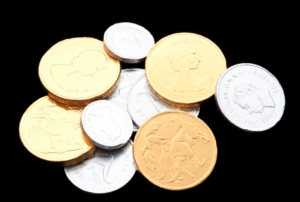How Bretton Woods Agreement impact the future of US gold standard
The Bretton Woods Agreements of 1944 had a massive influence on the U.S. economy, as it resulted in the pegging of U.S. currency to gold for 30 years, and ultimately ended with market-based floating exchange rates beginning in 1973. Its impact is still felt today when discussing foreign currencies and capital investments around the world, so understanding its significance is crucial if you are interested in securing your financial future and gaining insight into potential stock market strategies. In this blog post, we will be analysing how Bretton Woods could potentially influence the modern prospects for returning to a gold standard within American markets, providing advice into finding value within an unstable international economy environment both now and long-term investing goals later down the line.
Introduce the Bretton Woods Agreement and its economic impact on the US
The Bretton Woods Agreement, named after a conference held in Bretton Woods, New Hampshire in 1944, was a monetary system that attempted to establish economic stability after World War II. One of its significant impacts on the US economy was the establishment of the US dollar as the world’s reserve currency. This meant that other countries could convert their dollars to gold at a fixed exchange rate. However, as inflation rates rose in the US, the exchange rate became overvalued, causing countries to convert their dollars to gold, eventually leading to the collapse of the system in 1971. Despite its ultimate demise, the Bretton Woods Agreement played a crucial role in shaping the global economy and the US’s position in it.
Outline the current state of gold, and how it is used as a global store of value
Gold has been a valuable commodity for centuries, prized for its beauty and rarity. In modern times, it has become a global store of value, sought after by investors looking for a safe haven during times of economic uncertainty. Its value is influenced by various factors, such as supply and demand, inflation, and government policies. Despite fluctuations in price, gold remains a trusted investment and is used by central banks and sovereign wealth funds around the world. It also has practical uses in industries such as electronics and medicine. With its enduring appeal and versatility, gold is likely to continue to be a major player in the global economy for many years to come.
Discuss how governments are using gold to increase their purchasing power and standarize their currency
In the world of finance, gold has always been a symbol of wealth and power. Throughout history, it has been used as a means of trade and commerce and has been a valuable asset for many countries. Today, as governments aim to increase their purchasing power and stabilize their economies, many have turned to gold as a solution. By standardizing their currencies with gold, they can ensure greater stability in the global market and increase their bargaining power. As a result, more and more nations are investing in this precious metal, and its value continues to rise. Whether it be for economic reasons or simply as a symbol of prestige, it is clear that gold will always remain a prized asset for governments around the world.
Analyze the potential of a return to the gold standard and its effects on US Dollar value
As the United States economy continues to fluctuate, concerns over the stability of the US Dollar arise. One solution that has been suggested is a return to the gold standard. This would involve fixing the value of the US Dollar to a specific amount of gold reserves held by the government. While some argue that a return to the gold standard would bring stability and limit inflation, others caution that it could severely limit monetary flexibility and impede economic growth. Ultimately, the potential effects of such a move on the US Dollar value remain up for debate, and careful consideration and analysis would be necessary before making any significant changes to the country’s monetary system.
Assess whether or not a return to gold standard is possible in an increasingly globalized economy
The subject of a return to the gold standard provokes lively conversations and debates among economists and policy-makers alike. With the world becoming more and more interconnected through free trade and globalization, many argue that a return to such an outdated system would be an impossible feat. However, others contend that implementing such a system could provide economic stability in times of crises and prevent wide-scale financial collapses. The debate continues over whether a gold standard is a practical solution for today’s globalized economy, or if it is merely a nostalgic notion from a bygone era.

Summarize why Bretton Woods is still relevant today, and what lessons can be learned for future economic planning
Bretton Woods is a name synonymous with the post-World War II economic order. The historic 1944 conference in New Hampshire laid the foundation for a global monetary system and international economic cooperation. But the question remains, why is this conference still relevant today, almost 80 years later? Well, its legacy still resonates in international finance and economics. Bretton Woods established the International Monetary Fund (IMF) and the World Bank, whose functions have been instrumental in stabilizing economies, providing loans, and helping poorer nations develop. The lessons that can be learned from Bretton Woods can be applied today and in future economic planning as well. Mainly, the importance of international cooperation, flexible exchange rates, and balancing global trade imbalances. Bretton Woods is still relevant today because it’s a testament to how international cooperation can pave the way for positive change in the world economy.
In conclusion, the Bretton Woods Agreement has had an everlasting impact on the US economy. Gold is still seen as a global store of value, and governments are using gold to increase their purchasing power and standardize their currency. The idea of a return to the gold standard and its effects on the US dollar value have been debated, but it appears that this may not be practical in our current globalized economy. However, we can learn from the economic planning of Bretton Woods more than ever before by exploring other potential pathways for financial stability such as capital formation, developing methods to foster market growth and development, and reducing unemployment through targeted fiscal policies. This blog post has outlined why Bretton Woods is still relevant today and what lessons we can take away from it for future economic foresight. Click Allow for push notifications to stay up-to-date with all stock news; these updates will help you make sound financial decisions in order to maximize your returns while lightening risk.

